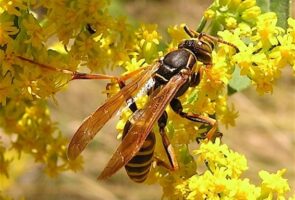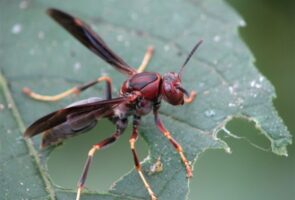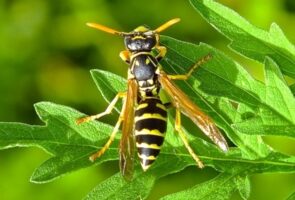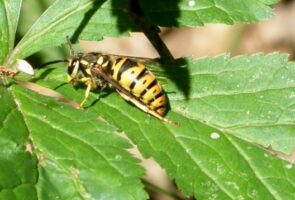Social Wasps
Social Wasps include Paper Wasps (subfamily Polistinae) and Yellowjackets and Hornets (subfamily Vespinae). Paper Wasps are actually semi-social wasps because all female Polistes wasps are potential breeders. They gather wood fibers that they mix with saliva to produce a paper-like substance used in building their umbrella shaped combs. The combs are provisioned with caterpillars as food for their larvae. Generally placid, paper wasps will sting only when their nest is disturbed. Nests generally do not contain more than 200 individual cells. There are 20 species of Paper Wasps in North America.
Yellowjackets build paper nests of chewed wood and plant fibers. A colony generally consists of one reproductive female, the queen, many female workers and, in the fall, males and new queens. All worker females remain sterile for life. Adults take nectar from flowers and visit aphid colonies for the honeydew produced by those insects. Only the queen survives the winter. Yellowjackets build nests below ground with as many as 5,000 workers tending the nest, and Bald-faced Hornets build above ground with as many as 300 workers in attendance. The Bald-faced Hornet is actually in the same genus as the Yellowjacket, Vespula. These wasps are generally more aggressive than Paper Wasps. The only true Hornet in North America is the European Hornet, in the genus Vespa, which was introduced into New York in the mid-1800s. It is well established in the northeast and may be expanding to the south.
Disclaimer: The content of NatureSearch is provided by dedicated volunteer Naturalists of Fontenelle Forest who strive to provide the most accurate information available. Contributors of the images retain their copyrights. The point of contact for this page is: Loren Padelford.





